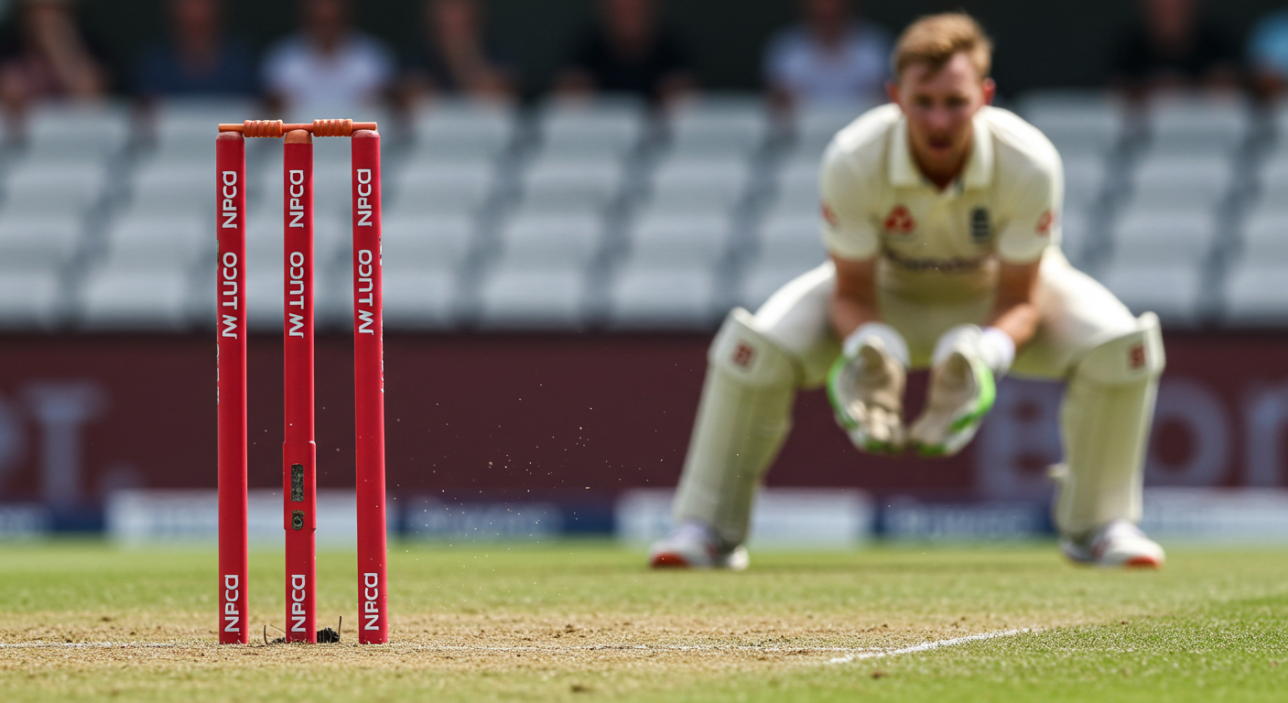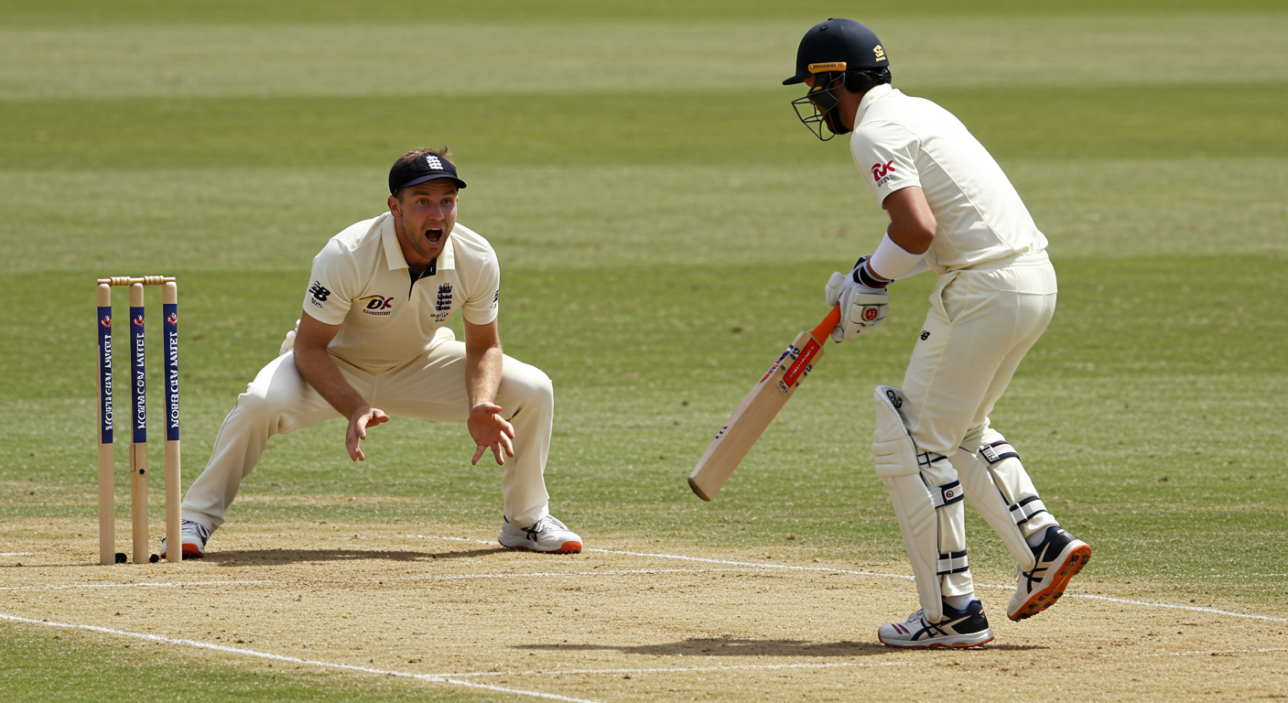
Language of Cricket: Terms and Their Origins
Cricket is often described as a sport of tradition, but it’s just as much a sport of language. From silly mid-off to googly, the game is filled with strange, specific, and sometimes downright baffling terminology. For the uninitiated, cricket’s vocabulary can feel like another language entirely—one developed in tea rooms, village greens, and colonial outposts over centuries.
But behind the quirks lie stories: about history, class, colonialism, and the evolution of the sport itself. Every phrase carries a trace of its origins, shaped by the contexts in which the game was played, recorded, and romanticised.
This article explores the rich language of cricket, tracing the origins of key terms that have stood the test of time. Whether you’re a die-hard fan or a curious newcomer, understanding where these words come from offers new appreciation—not just for the game, but for the culture that surrounds it.
Let’s begin with two of the most recognisable words in the cricketing lexicon.
1. Wicket – The Word That Means Everything

In cricket, few terms are as central—or as confusing—as “wicket.” It can mean the stumps, the pitch itself, or the dismissal of a batter. But where did it come from?
The term wicket is believed to have been borrowed from the world of medieval sport, particularly stoolball and early bat-and-ball games played in England. The original “wicket” likely referred to a small gate or doorway used as a makeshift target. Over time, this structure evolved into a set of stumps topped with bails—the modern wicket we know today.
But its multiplicity of meanings developed with the game. When a batter is out, we say a wicket has fallen. The surface of play is also called a wicket, especially when discussing conditions (“a turning wicket” or “a green top”). The enduring versatility of the word reflects cricket’s layered evolution.
Its endurance is also cultural. In village cricket, “wicket” often stood in for the entire game (“fancy a wicket after tea?”). In professional commentary, it anchors statistical milestones and match narratives.
Few words in sport carry so many roles. To understand cricket is, in many ways, to understand how “wicket” came to mean everything and anything on the field.
2. Duck – A Humble Bird, a Humbling Score
No batter wants it, every bowler celebrates it, and fans can’t help but remember it. A duck—getting out without scoring a run—is one of cricket’s most iconic terms. But why a duck?
The origin lies in Victorian slang. The term “duck’s egg” was used in 19th-century England to describe the number zero, referring to the shape of the digit—round, empty, and slightly humiliating. Early scorebooks even used an oval to represent zero, reinforcing the visual metaphor. Over time, “duck’s egg” was shortened to “duck,” and the term stuck.
Its enduring usage is partly due to how well it captures the psychological sting of the moment. There’s a peculiar poetry to the phrase—a softness masking disappointment. And cricket, with its long memory and love for records, never forgets a duck.
The term has also inspired a colourful range of subtypes: a “golden duck” (out on the first ball), a “diamond duck” (out without facing a delivery), and even a “pair of ducks” (out for zero in both innings of a Test).
What began as a whimsical phrase has become a universal shorthand for failure. And in cricket’s rich vocabulary, no other animal is remembered quite so vividly.
3. Silly Mid-Off – The Fine Line Between Strategy and Madness

For many outside the game, few cricket terms spark more curiosity—or confusion—than silly mid-off. Why silly? What does it mean? And how did it become part of cricket’s strategic lexicon?
To start, the position itself is real. It refers to a fielder placed just a few metres in front of the batter on the off side, close enough to catch soft defensive shots or intimidate the player. But the proximity is risky. The fielder stands in the firing line of powerful drives, with little time to react.
The adjective “silly” wasn’t always meant to be comic. In older English, “silly” could mean defenseless or vulnerable—an accurate description of the perilous position. Over time, the modern meaning of “silly” took hold, and the name stuck in popular imagination.
There are other “silly” positions too: silly point, silly mid-on, all equally close and hazardous. These are high-stakes zones, used primarily in Test cricket where tactics are slower and pressure accumulates over time.
Cricket’s fielding terminology often blends logic with the lyrical, and “silly mid-off” exemplifies this. It captures the peculiar charm of the sport—a game where danger, calculation, and language collide with tradition. In no other sport could standing in harm’s way be so eloquently named.
4. Googly – Deception in Disguise
The googly is one of cricket’s most magical inventions—a ball that looks like it will spin one way, but sharply turns the other. Used by leg-spinners to deceive right-handed batters, the googly is a trick wrapped in technique. But its name is just as intriguing.
The term is widely attributed to Bernard Bosanquet, an English leg-spinner who first bowled it in the early 1900s. Seeking variety in backyard cricket, he experimented with wrist-spin techniques that caused the ball to break unexpectedly from off to leg. When he introduced the delivery in first-class cricket, it startled opponents—and quickly earned a name.
There’s no definitive answer as to why it was called a googly. Some suggest it derived from the word “googly-goo,” a nonsensical Victorian expression denoting confusion or trickery. Others believe it was simply a made-up term meant to reflect its unpredictable nature.
Regardless of origin, the word stuck. A well-bowled googly remains a weapon of artistry—subtle, surprising, and devastating when done right. It’s a reminder that cricket isn’t just about power or pace; it’s also about psychology, disguise, and finesse.
In the rich language of cricket, few terms better capture the blend of surprise and strategy than the ever-deceptive googly.
5. Maiden Over – Economy with Elegance

In cricket, a maiden over is an over in which no runs are scored off the bat. It’s a term that represents discipline, control, and often, pressure-building brilliance. But its name often confuses newcomers. What does virginity have to do with dot balls?
The word “maiden” here comes from its older, literary meaning: untouched, unspoiled, unused. In this context, a “maiden” over is one in which no scoring has “touched” the bowler. It reflects the era in which the game’s vocabulary developed—Victorian England, where metaphor and elegance often shaped everyday language.
Maiden overs have long been associated with Test cricket, where run control can be as vital as taking wickets. Bowlers like Glenn McGrath, James Anderson, and Anil Kumble made careers out of crafting sequences of dot balls that squeezed opponents into mistakes.
What makes the term endure is its contrast to the often aggressive, boundary-heavy image of modern T20s. Even today, when a bowler sends down six consecutive scoreless deliveries in a T20 match, commentators light up. It’s rare. It’s valuable. And it turns momentum.
The phrase “maiden over” captures cricket’s deep appreciation for subtlety. It rewards patience over flash and reminds us that in cricket, not doing something—not conceding runs—can be just as impactful as hitting a six.
6. Chinaman – Controversy in a Name
Among cricket’s more curious—and controversial—terms is the chinaman, used to describe a left-arm wrist-spin delivery that turns from off to leg for a right-handed batter. Essentially, it’s a left-armer’s version of a leg-spinner’s googly.
The term’s origin is widely linked to Ellis “Puss” Achong, a West Indian cricketer of Chinese descent who played in the 1930s. During a Test match against England, he bowled an unorthodox delivery that bamboozled the batter. Legend has it the dismissed Englishman muttered,
“Fancy getting out to a Chinaman,”
and the term stuck.
Though colourful, the name has drawn criticism in recent years. Many argue that using ethnicity to describe a type of delivery is inappropriate and outdated, even if no offence was originally intended. Some broadcasters and coaches have begun opting for alternatives like “left-arm wrist spin”, especially in more inclusive environments.
Nevertheless, the term has held on in commentary boxes and coaching manuals, due to habit and historical weight. It also underscores cricket’s colonial legacy—the way it adopted, recorded, and sometimes carelessly named the tools of its trade.
As cricket continues to evolve, so too does its vocabulary. The debate around “chinaman” reflects broader efforts to update the language of cricket in line with the sport’s modern, global audience.
7. Nightwatchman – Tactics at Twilight

The nightwatchman is one of cricket’s most peculiar roles—a lower-order batter sent in near the end of a day’s play to protect a more skilled batter from the risk of getting out in fading light. On paper, it’s a sacrifice. In practice, it’s strategy.
The term emerged in the early 20th century, borrowing from military and civic traditions. A “watchman” was someone who stood guard, especially at night, when danger was perceived to be higher. In cricket, the nightwatchman does exactly that: guards the crease so a key player can return fresh the next morning.
While the idea may seem cautious, it’s rooted in psychology. The final overs of the day often produce wickets due to fatigue, low light, or bowlers finding rhythm. Protecting a top-order batter from that threat can save a match.
Famous nightwatchman performances—like Jason Gillespie’s double century against Bangladesh in 2006—have even turned the role into an opportunity. But make no mistake: it’s still a gamble.
The term “nightwatchman” adds to the poetic side of cricket—a tactical role named with the weight of old-world metaphor. It’s a prime example of how the language of cricket turns situations into symbols, blending logic with literary flair.
8. Sticky Wicket – From Pitch to Idiom
Today, the phrase sticky wicket is used far beyond cricket—to describe any awkward or difficult situation. But in its original form, it referred quite literally to a dangerous playing surface.
In early cricket, pitches were uncovered and at the mercy of the weather. When rain fell and then dried partially, the result was a damp, uneven surface—a “sticky” wicket. On such pitches, the ball could behave unpredictably: shooting low, bouncing high, or stopping completely. Batting became a nightmare, and matches often swung wildly.
The term entered wider English usage during the 20th century. Journalists, politicians, and everyday speakers adopted it to describe anything fraught with difficulty or risk. It became one of cricket’s greatest linguistic exports.
Despite changes in pitch technology and the introduction of covers, the phrase persists in the sport itself—especially in Tests, where conditions still evolve. Even metaphorically, it retains that sense of uncertainty and hazard.
“Sticky wicket” is more than just a quirky expression—it’s a relic from cricket’s rougher, more unpredictable past. Its journey from the village green to global idiom reflects the enduring influence of the language of cricket far beyond the boundary rope.
Language of Cricket: Why Cricket’s Vocabulary Still Matters

The language of cricket is more than colourful jargon—it’s a living reflection of the sport’s history, culture, and evolution. These terms are rich with meaning, not only describing action on the pitch but echoing the times and traditions that shaped the game.
From medieval gates to colonial metaphors, cricket’s terminology has always carried more than surface value. Words like “wicket” or “googly” are not just descriptive—they’re poetic, coded, and full of legacy. Others, like “chinaman” or “sticky wicket,” show how the game’s language seeps into wider culture, becoming part of how we speak beyond sport.
Even today, as cricket evolves through formats like T20 and The Hundred, its vocabulary continues to grow—adapting while never forgetting its roots. Understanding where these words come from not only deepens our grasp of the game but connects us to its vast and varied past.
In no other sport does language play such a central role in both tradition and storytelling. And as long as cricket is played, its unique and often whimsical vocabulary will remain a key part of what makes it beloved, baffling, and beautifully British.





